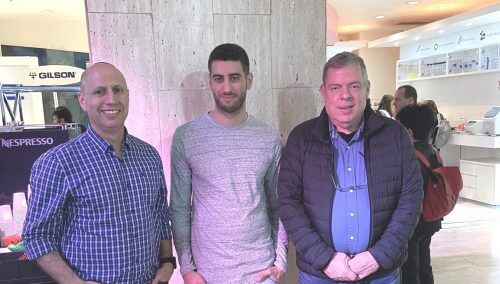The discovery may serve as a basis for the development of drugs for various types of allergic diseases, including asthma of the respiratory tract * The researchers developed a prototype of a potential drug

Researchers at Tel Aviv University have discovered a central mechanism in the development of the skin disease atopic dermatitis, also known as 'asthma of the skin', and have developed a potential drug that blocks the mechanism and may in the future prevent or cure the disease. The treatment, which has been successfully tested in a mouse model and in human cell cultures, may serve as a basis for the development of future drugs for other types of chronic allergic diseases, including asthma of the respiratory tract and EoE - a severe allergic disease of the esophagus.
The leaders of the research are Professor Ariel Munitz from the Department of Microbiology and Clinical Immunology at the School of Medicine and Professor Itai Banhar from the School of Molecular Cell Biology and Biotechnology at the Faculty of Life Sciences. The article was recently published in the journal Science Immunology.
"Atopic dermatitis, also known as 'asthma of the skin', is a chronic allergic disease that causes considerable suffering to 11-7% of the population," says Prof. Munitz. "According to various estimates, there are about 30-18 million people in the US alone. In addition, many researchers believe that this disease is an opening for the development of other allergic diseases, such as asthma of the respiratory tract. In this study, we sought to investigate and deeply understand the mechanism underlying atopic dermatitis, and try to develop a potential cure for it."
Prof. Benhar explains: "It has been known for a long time that in the inflammatory process that causes atopic dermatitis (as well as other allergic diseases) two central proteins participate: interleukin 13 known as 13-IL and interleukin 4 known as 4-IL. Pharmaceutical companies all over the world are trying to develop drugs based on blocking both proteins, and one such drug has even been approved by the American Drug Administration (FDA) and has recently come into use. However, the exact mode of action and the division of roles between the two proteins in causing the disease are not yet known, and most researchers in the field usually treat them as one part. Therefore, in the first phase of the research, we wanted to distinguish between the two proteins and understand which one is dominant in causing the disease."
To identify the main cause of atopic dermatitis, the researchers created genetically modified mice that do not express a central receptor that binds to the proteins IL-13 and IL-4, the name of the receptor: IL-13Rα1. They found that these mice are resistant to the disease: when they are exposed to an allergen that produces atopic dermatitis , they remain healthy. From this, the researchers concluded that this receptor is essential for the development of the disease. Later, they alternately neutralized the two proteins 13-IL and 4-IL, and showed that the dominant pathway for the development of the disease passes through a link between the receptor and the IL-13 protein (and not IL -4).
In the next step, the researchers relied on their findings in order to develop a potential treatment for atopic dermatitis: they developed a dedicated antibody - a protein that binds to the relevant receptor in mice, thus blocking it and preventing it from binding to any other protein, including IL-13. The treatment was tested on mice in a model of atopic dermatitis, and proved to be an effective medicine: the mice recovered from the disease.
In light of the promising results in mice, the researchers moved on to the critical phase of their research: they developed an antibody that binds to the same receptor in humans, and is designed to block the course of the disease and serve as a potential cure for atopic dermatitis. The breakthrough treatment has been successfully tested in human cell cultures.
Prof. Munitz concludes: "Our research brings a new approach to the treatment of atopic dermatitis and possibly also other chronic allergic diseases, such as asthma of the respiratory tract and EoE - a severe chronic allergic disease of the esophagus that requires an extreme diet. As part of the research, we developed an antibody that neutralizes the course of the disease in humans, and may be used as a future medicine. Our goal now is to advance the development process and later reach clinical trials in humans.'

5 תגובות
How can you volunteer for the drug test?
Two of my children suffered from atopic dermatitis in their childhood, mainly in the area of the elbows and knees, I was referred to alternative therapists and the symptoms disappeared and were no more, thanks to an ointment they prepared for them. Haven't the alternative treatments that are used so widely in the public been tested to date?
Thank God for good news! Good luck to the researchers. [From long experience with allergies, this is a serious nuisance.] Well done!
Well done. Appreciate the beautiful work done. We hope that the experiments will indeed be successful and a medicine will be approved for use.
As a patient with respiratory asthma and atopic dermatitis ("asthma of the skin"), I am the first who would be happy to participate in the clinical trial in humans.